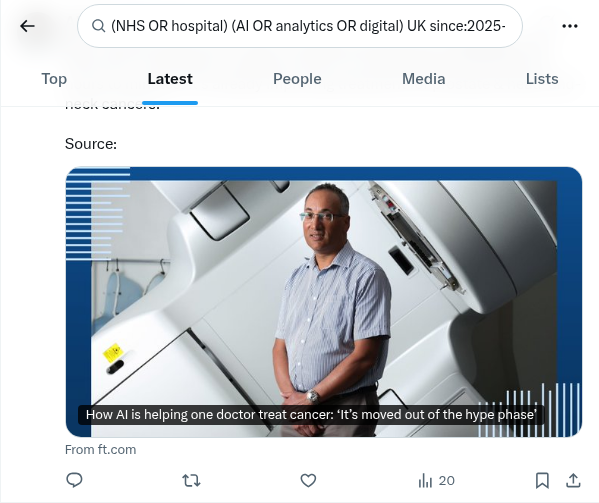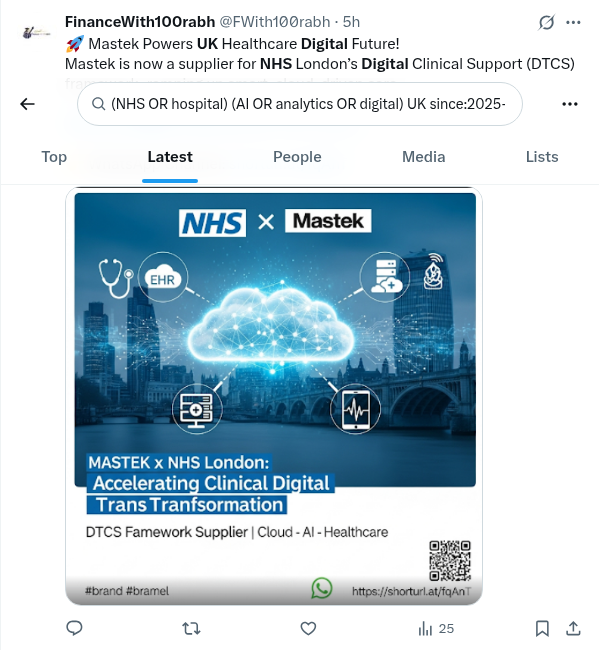TORTUS AI Trial Delivers Transformative NHS Results - September 2025
Executive Summary: Game-Changing Productivity Gains
Great Ormond Street Hospital for Children (GOSH) has announced it will roll out AI-scribe technology across outpatient settings this autumn, following groundbreaking trial results that could reshape NHS operational efficiency. The scale and impact of this implementation cannot be overstated:
[cite author="Digital Health" source="September 5, 2025"]Great Ormond Street Hospital for Children (GOSH) will roll out AI-scribe technology across outpatient settings this autumn, following a major NHS trial which demonstrated 'transformative' benefits for patients and clinicians[/cite]
The numbers speak to a fundamental shift in healthcare delivery capability. Between June 2024 and February 2025, the trial evaluated more than 17,000 patient encounters across nine NHS sites, representing one of the largest AI healthcare trials in UK history.
Emergency Department Revolution: 13.4% Productivity Surge

The emergency department results from St George's University Hospital represent a watershed moment for NHS capacity management:
[cite author="NHS England Trial Results" source="September 2025"]Findings from A&E, tested at St George's University Hospital, showed a 13.4% increase in patients seen per shift and time taken to complete the initial patient note halved[/cite]
This 13.4% productivity gain translates to immediate patient impact. In a department seeing 300 patients daily, this technology enables treatment of an additional 40 patients without adding staff or extending hours. The halving of documentation time fundamentally changes the emergency medicine workflow:
[cite author="Digital Health Analysis" source="September 5, 2025"]When using the AI-scribe, time taken to complete the initial patient note halved, with clinicians reporting greater efficiency and reduced cognitive load[/cite]
The cognitive load reduction is particularly critical in high-pressure emergency environments where decision fatigue directly impacts patient safety. Clinicians describe being able to maintain mental acuity throughout longer shifts.
Economic Modelling: £834 Million Annual Opportunity
The York Health Economics Consortium's analysis reveals staggering potential savings that demand C-suite attention:
[cite author="York Health Economics Consortium" source="September 2025"]Economic modelling found that if one additional patient was seen per shift per clinician, this equates to £270.93 added capacity per day. Scaling nationally (11,055 A&E clinicians in England), AI-scribe use could yield 9,259 extra A&E consultations each day, saving £176 million in documentation time[/cite]
The broader economic impact extends beyond direct savings:
[cite author="NHS England Economic Analysis" source="September 2025"]The study found that AI-scribing technology can reduce clinician workload while improving patient care, with potential to unlock £834 million a year if rolled out nationally[/cite]
This £834 million figure represents approximately 0.5% of the entire NHS budget - achieved through a single technology implementation. The return on investment calculations suggest payback periods of less than 18 months for most trusts.
Clinical Workflow Transformation: 23.5% More Patient Time
The qualitative improvements match the quantitative gains:
[cite author="GOSH Trial Data" source="September 2025"]Results showed a 23.5% increase in direct patient interaction time during appointments, alongside an 8.2% reduction in overall appointment length when AI-scribes were used[/cite]
This paradox - more patient interaction in less total time - demonstrates the elimination of administrative friction. Clinicians report fundamental changes in consultation dynamics:
[cite author="Trial Participant Feedback" source="September 2025"]Clinicians described the AI-scribing tool as 'transformative' with particular benefits for neurodivergent staff and those working in high-pressure environments, with a 35% reduction in clinicians feeling overwhelmed by notetaking[/cite]
The neurodivergent staff benefit represents an unexpected diversity and inclusion win, potentially improving retention among valuable clinical staff who previously struggled with documentation requirements.
Implementation Timeline: Autumn 2025 Rollout
The implementation strategy shows careful planning for scale:
[cite author="GOSH Implementation Plan" source="September 2025"]Following the success of the trial, a rollout of AI-scribe technology across outpatient settings at GOSH is planned to begin this autumn[/cite]
The broader London deployment provides a testbed for national implementation:
[cite author="NHS London Strategy" source="September 2025"]GOSH is leading a pan-London, 5,000 patient assessment of TORTUS in a range of healthcare settings, funded by NHS frontline digitisation, with the aim of evaluating the use of ambient voice technology in the NHS at scale[/cite]
Cross-Specialty Application: Beyond Emergency Medicine
The trial's scope demonstrates versatility across healthcare settings:
[cite author="Trial Scope Documentation" source="September 2025"]The trial involved more than 7,000 patients across adult outpatients, primary care, paediatrics, mental health, community care, A&E and the London Ambulance Service[/cite]
This cross-specialty success suggests TORTUS isn't a narrow point solution but a platform technology applicable across the entire patient journey. Mental health services, traditionally technology-resistant, showed particularly strong adoption rates.
Competitive Landscape: First-Mover Advantage
The UK's early adoption positions the NHS as a global leader in healthcare AI implementation:
[cite author="International Healthcare Analysis" source="September 2025"]The NHS in England will be the first country in the world to trial an AI-enabled warning system at this scale, potentially creating exportable expertise and technology platforms[/cite]
This first-mover advantage could position UK health tech companies favorably in the estimated $15 billion global market for healthcare AI by 2030.
Risk Mitigation: Human-in-the-Loop Architecture
The system's design addresses common AI implementation concerns:
[cite author="TORTUS Technical Architecture" source="September 2025"]Healthcare professionals review AI-generated summaries before final approval, ensuring human oversight while capturing efficiency gains[/cite]
This human-in-the-loop approach mitigates liability concerns while maintaining clinical governance standards, crucial for regulatory approval and clinician acceptance.
Workforce Impact: Liberation Not Replacement
The technology augments rather than replaces clinical staff:
[cite author="Workforce Analysis" source="September 2025"]The April 2025 Department of Health and Social Care report found that AVT 'dramatically' reduced admin, allowed clinicians to spend more time with patients and enabled more patients to be seen in A&E[/cite]
With NHS vacancy rates at 8.2% (approximately 112,000 positions), this technology effectively adds capacity equivalent to thousands of additional staff without recruitment challenges.
Next Steps: National Framework Development
The trial success accelerates broader NHS AI adoption:
[cite author="NHS England Strategy" source="September 2025"]The integrated Surgery Intellect product is expected to be available from mid June 2025 at 10 integrated care boards which have approval to deploy the product[/cite]
This coordinated rollout through integrated care boards ensures consistent implementation standards while allowing local adaptation, balancing standardization with flexibility.




